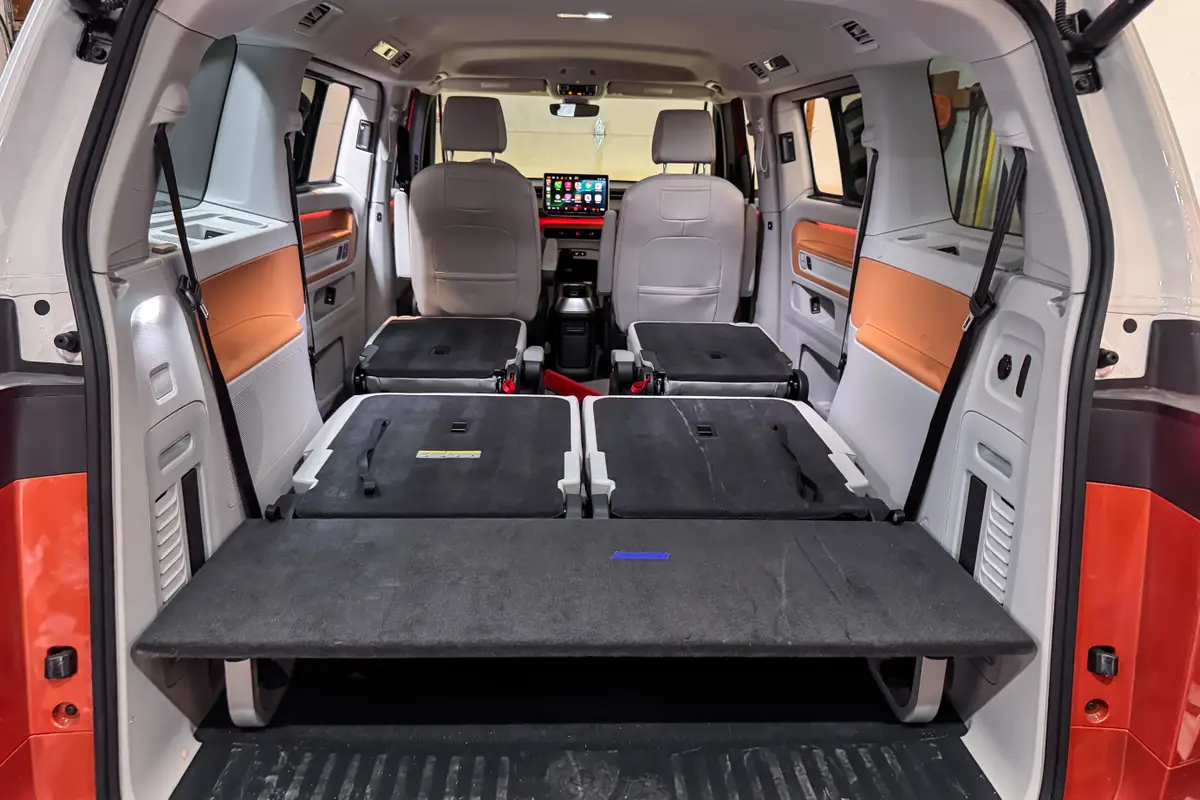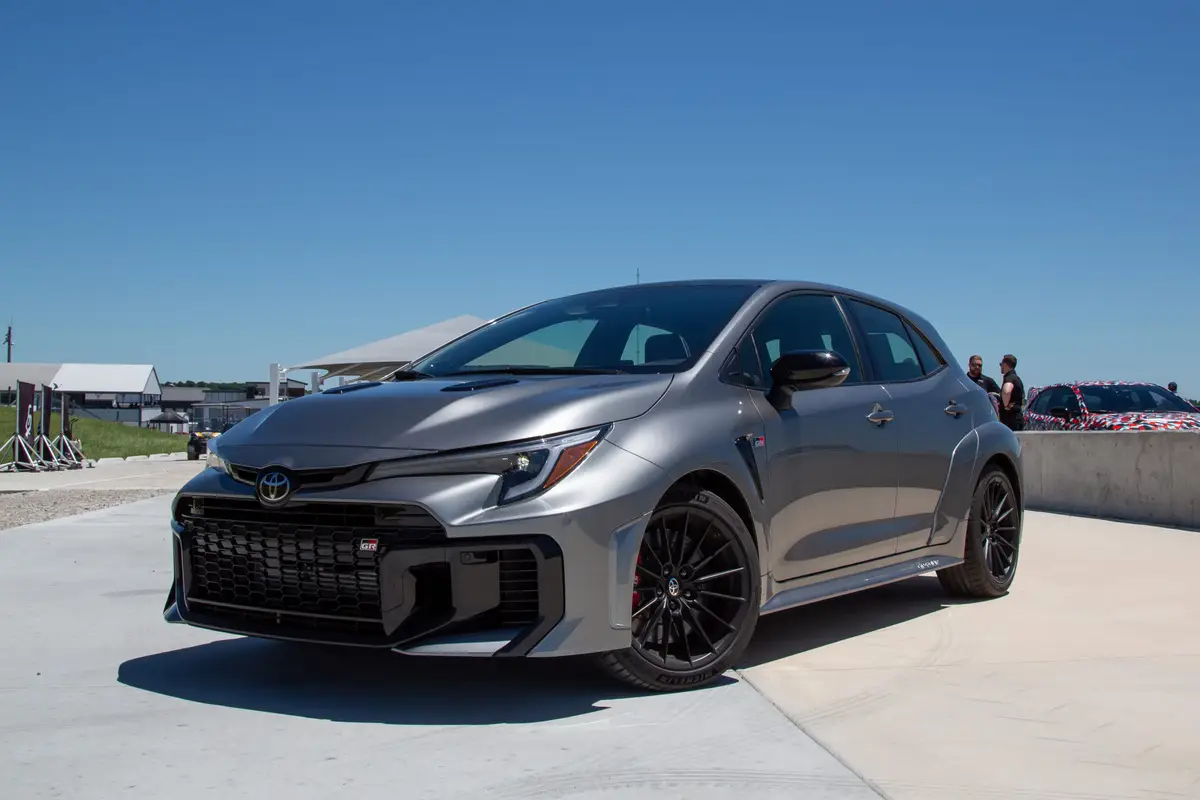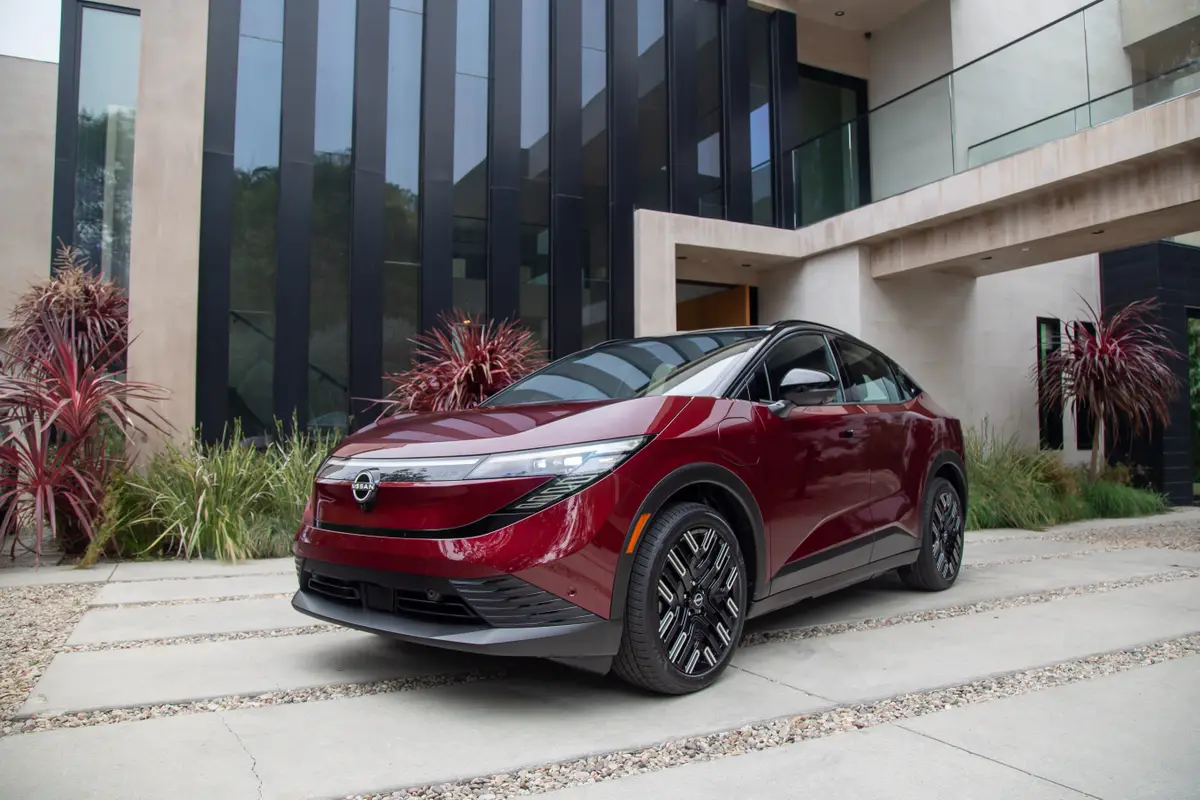2014 Ram Power Wagon: First Drive
Pickup truck off-road packages have developed far beyond the once common and simple sticker, skid plate and shock upgrades. Modern-day 4x4s have evolved into far more capable vehicles than ever before. The Ram Power Wagon was reintroduced in 2005 under the Dodge moniker. A pickup with front and rear selectable lockers, supple suspension, an electronic disconnecting sway bar, off-road focused tires and a real Warn 12,000-pound winch hidden behind the bumper had never been offered. It was groundbreaking and unbelievable that a new truck like this could even exist in our litigation-consumed society. But we're glad it did.
Fast-forward to June 2013, when we had our first look at the 2014 Ram 2500/3500 trucks where the Power Wagon model was briefly mentioned, but nowhere to be seen in the lineup. The new 2500 three-quarter-ton truck, the chassis on which the Power Wagon is based, received coil-link rear suspension, a radius arm front suspension and an optional 6.4-liter Hemi V-8 punching out 410 horsepower and 429 pounds-feet of torque, among other things. We were later able to get behind the wheel of these heavy-duty trucks and report on the performance of the new front and rear suspension and 6.4-liter Hemi.
Ram never hid the fact that a 2014 Power Wagon was coming, but an unfortunate marketing incident at a beach confirmed the off-road truck was indeed on its way.
Nearly a year after the first mention of the 2014 Ram Power Wagon, we received more detailed specs and images of the off-road pickup. With all the details laid out on paper, there was only one question left unanswered: Is the 2014 Ram Power Wagon an improvement over the outgoing model? The simple answer is yes. To come to that conclusion, we got behind the wheel for an on- and off-road adventure that took us through 1,000 miles of highways traversing the deserts and mountains of California and Arizona.
The is only available in a crew cab with the 6-foot 4-inch bed. We spent time in all three available trim levels: Tradesman, SLT and Laramie.
On the Road
We appreciated the 410 hp and 429 pounds-feet of torque from the 6.4-liter Hemi V-8. It's the only engine available for the Power Wagon. The previous generation Power Wagon featured the 5.7-liter Hemi and 4.56:1 axle gears. This made it a somewhat high-revving truck on long freeway jaunts, which resulted in less than ideal fuel economy numbers that often dipped below the teens. Die-hard truck fans will be quick to call foul on the switch to 4.10:1 gears in the 2014 Power Wagon axles, but torque and horsepower from the new 6.4-liter has made the gearing switcheroo a nonissue from the driver's seat. Ram engineers were also able to take advantage of the increased power and added a multidisplacement system, which allows the truck to automatically run on four cylinders when peak power output is not required. You can hear the MDS kick in when floating the throttle downhill or on mostly flat sections of road. It's little more than a change in engine tone that becomes a burble. The MDS is unnoticeable as far as power transmission is concerned. It quickly and automatically switches back to eight-cylinder mode at the slightest throttle input. Where we would typically get 11-12 mpg with the old 5.7-liter Power Wagon, the 2014 model with the 6.4-liter will muster 13-14 mpg. It's not often that you see improved fuel economy with a larger displacement engine, but 6.4-liter Hemi in the Power Wagon does just that thanks in part to the increased torque, the MDS, front axle disconnect and the 4.10:1 axle gears.
The Power Wagon suspension is significantly different than the Ram 2500. For improved off-road performance the Power Wagon features straight-rate coil springs at all four corners, where the 2500 receives dual-rate coils for more load-carrying capacity. The four-link rear suspension of the Power Wagon rides incredibly smooth for a three-quarter-ton truck, even smoother in some situations than several of the currently available half-ton trucks with the heavy-duty gross vehicle weight packages. The front suspension, however, seems a bit unmatched to the rear. It could be caused by the improved roll stiffness of the radius-arm suspension, but whatever it is the front suspension spring feels just a touch firmer than the rear.
The new and more-aggressive 285/70R17 Goodyear DuraTrac tires increased tire noise in the cab at highway speeds. It's a little noisier than with the same-sized BFG All-Terrain tires on the previous-generation Power Wagon. On the plus side, it's been our experience that the Goodyear DuraTrac tires are better performers in the mud, ice and snow.
We liked the range of trim levels available for the Power Wagon; however, none of the seats really inspired us. It's not to say that they were uncomfortable, quite the contrary. We simply want to see a Power Wagon-specific seat option with more bolstering to keep you in place off-road. They should look and feel sportier, maybe even feature some Power Wagon badging. As it sits, the Power Wagon interior isn't much different than a regular Ram 2500, aside from a few knobs and controls.
Off-Road
As with all three-quarter-ton trucks, dropping the Power Wagon's tire pressure from the recommended 60/65 pounds per square inch (front/rear) to something in the neighborhood of 35-45 psi all around (depending on terrain) greatly improves the off-road ride and performance. We love the more aggressive Goodyear DuraTrac tires and the new forged aluminum wheels with much smaller and less vulnerable wheel caps. The large plastic wheel caps on the previous-generation Power Wagon would often get crushed off-road or launch themselves when driving over harsh, bumpy roads.
Shifting into four-wheel drive is made easy with the manual shifter. It's a popular feature in the off-road world that seems to be slowly going away. As with any 4×4 shifter, it's easiest to shift in and out of 4-Low if you come to a complete stop and put the transmission into neural. Shifting in and out of 4-High can be done on the fly in the Power Wagon.
Inevitably, someone always wants a Cummins diesel-powered Power Wagon. The most common argument is for the increased torque off-road. There are several reasons why a Cummins Power Wagon is not feasible or even desirable. Ultimately, the new 6.4-liter Hemi V-8 backed with 4.10 axle gears provides more than enough grunt to pull the big truck down the trail comfortably and reliably. The Cummins would simply be overkill in this situation and a hindrance in most other off-road scenarios.
The sway-bar disconnect and locker controls are conveniently located in the same area to the right of the steering wheel for quick access. We noticed that the front and rear lockers engaged and disengaged slightly quicker and easier than we have experienced with Power Wagons of the past. We were told the new Powernet electrical architecture system is likely the reason for the faster response times from the locker sensors and switches. Most obstacles can be conquered with only the rear locker locked and the sway bar disconnected. With both lockers locked you have enough traction on hand to literally drag the truck through a trail that would destroy the body. Speaking of drag, we never needed the 12,000-pound Warn winch, but our buddies with other trucks rested easy knowing it was there when they got stuck.
The "Articulink" radius arm front suspension system features Power Wagon-specific radius arms combined with the disconnecting sway bar. This system provides an impressive amount of flex, especially for a three-quarter-ton truck. The Articulink radius arm replaces the rigid radius arm structure found on the standard Ram 2500. The Articulink system includes a large additional rubber bushing per side and short link sections used for the upper axle mounts. The design offers the best of both worlds: increased roll stiffness for hauling and improved articulation over off-road obstacles. We pulled our test Power Wagon into a twisty trail section to get a firsthand look at the Articulink in action. We were impressed by the movement allowed in the bushing. Combine the flexible front suspension with the supple five-link rear suspension and you have a very off-road-worthy truck. We did notice that much like on the road, the front end seemed slightly more firm than the rear suspension.
Thanks in part to gratuitous ground clearance, the Power Wagon really shines on rocky trails. It takes a pretty significant obstacle to reach the body and bumpers. The truck also shines on graded roads and rough, unimproved trails littered with cobble stones. We found that more speed allowed the truck to smoothly push the loose rocks out of the way rather than bounce over them. In this case slower was not better. You do have to watch your speed in the open desert though; larger bumps and deep whoop sections are not what the Power Wagon does best. Hitting a 2-foot-deep rut in a nearly 7,000-pound truck will feel like hitting a 2-foot-deep rut in a nearly 7,000-pound truck.
Under the Power Wagon you'll find a healthy amount of steel skid plating protecting the vitals. The monstrous nearly 2-inch diameter tie rod seems unbendable. Out back we noticed a change in the way the rear aluminum driveshaft is manufactured. Older models were simply welded. The 2014 model is friction welded. The advantage is that the new driveshaft yoke looks longer, slightly more rock-resistant and a bit less fragile. Ultimately, the overall attention to detail has resulted in what we believe is a better Power Wagon to date. Pricing for the three Power Wagon trim levels starts at $45,690 for the Tradesman, $50,340 for the SLT, and tops out with the Laramie at $56,215. The most expensive Power Wagon we test drove was .
Our Power Wagon Wish List
Sure, it's the only available truck featuring an off-road package that includes front and rear lockers, dirt-friendly tires and wheels, a disconnecting sway bar and a real Warn winch. There are still several things we would like to see available on future models of the Power Wagon. As we noted earlier, we'd like to have sportier Power Wagon-specific seating with increased bolster support. Maybe even something cushier like you find in the current top-trim Jeep Cherokee. The lockers and sway-bar disconnect should work in all transfer case speeds. There are some off-road situations where the flexibility to do so could be useful.
We would love to have a built-in on-board air compressor for filling up tires at the end of the trail and for inflating recreational lake and camping items. The pump should produce in the neighborhood of 3 cubic feet per minute and connect to at least a 1-gallon tank. Of course, we would absolutely worship a standard cab short bed and manual transmission option, although we are well aware that the take rate on both would be dismal. Lastly, we think the 33-inch tires look a little small in the large fenders. The Power Wagon would benefit from 35-inch tires in more ways than one. How about it Ram?
Cars.com photos by John Cappa, manufacturer images

Featured stories




